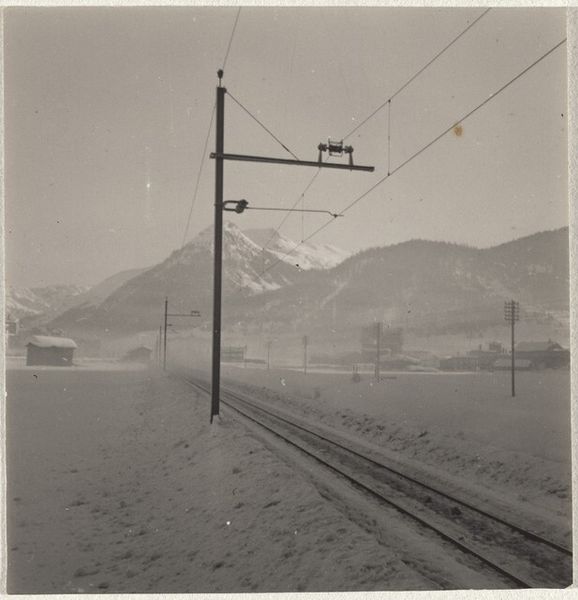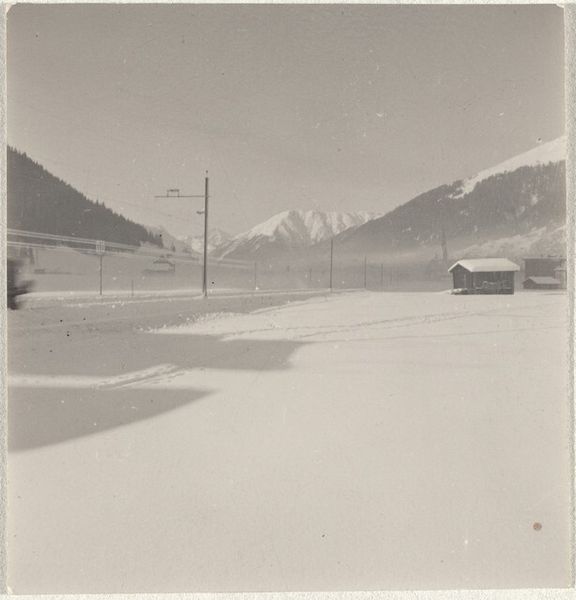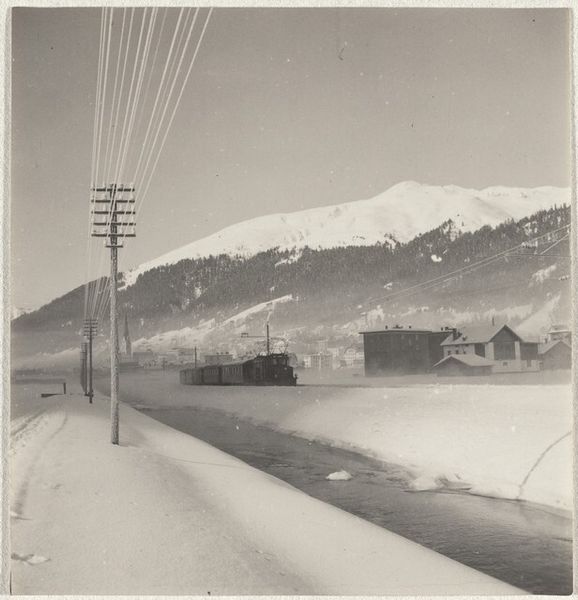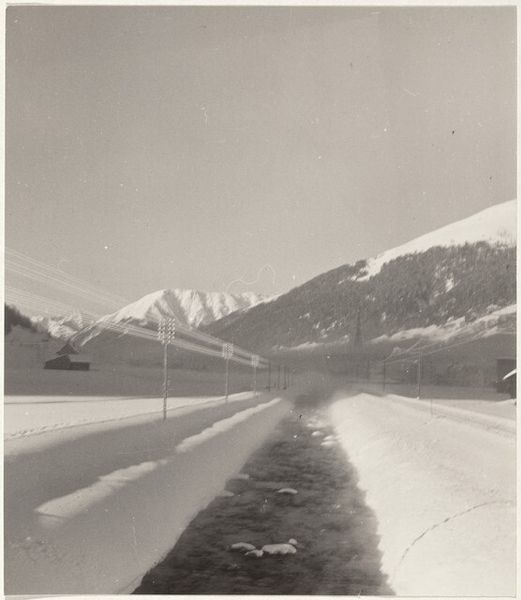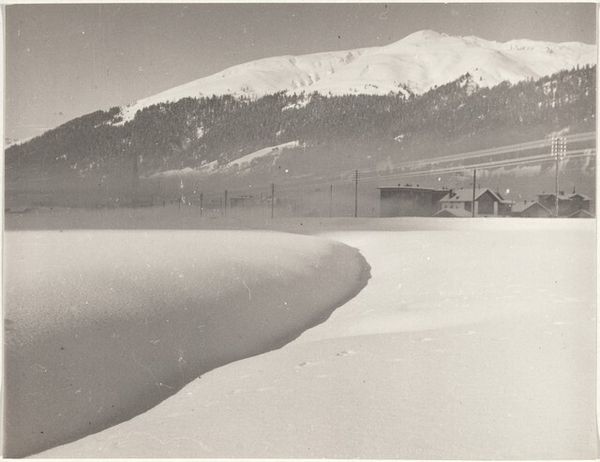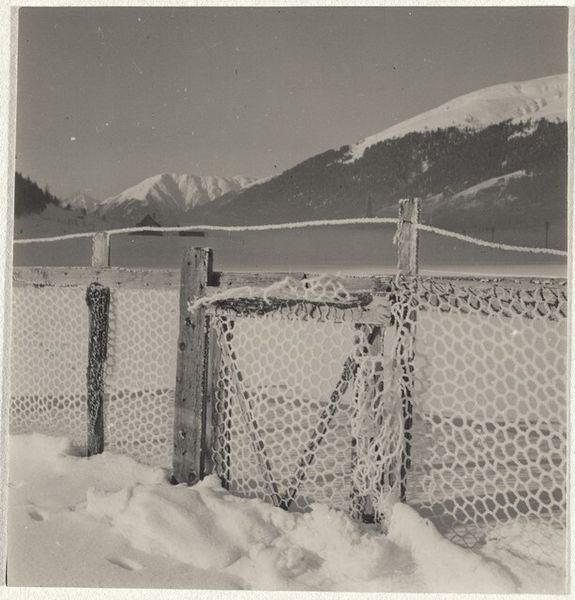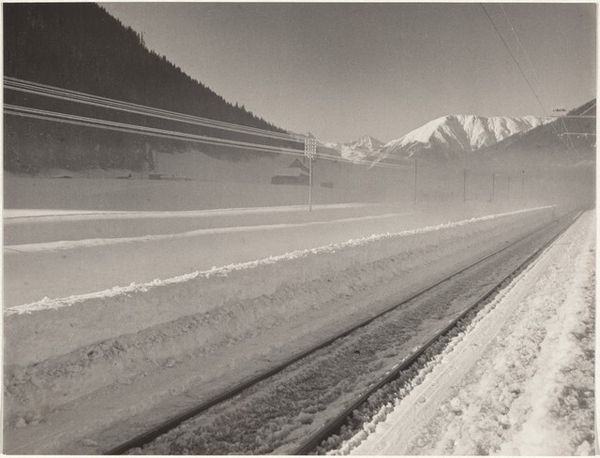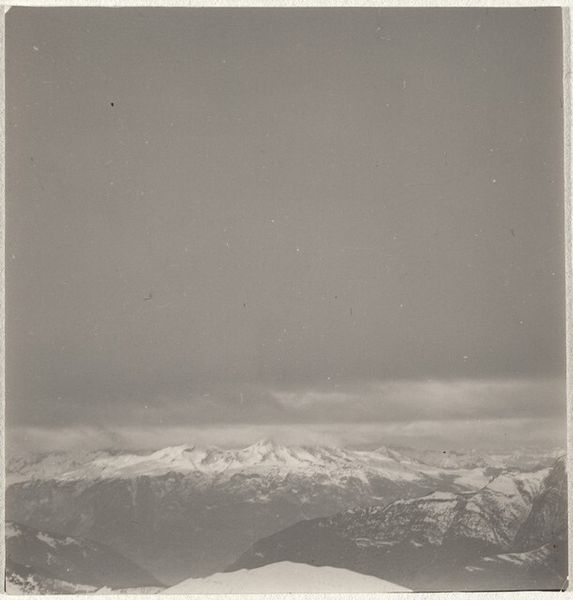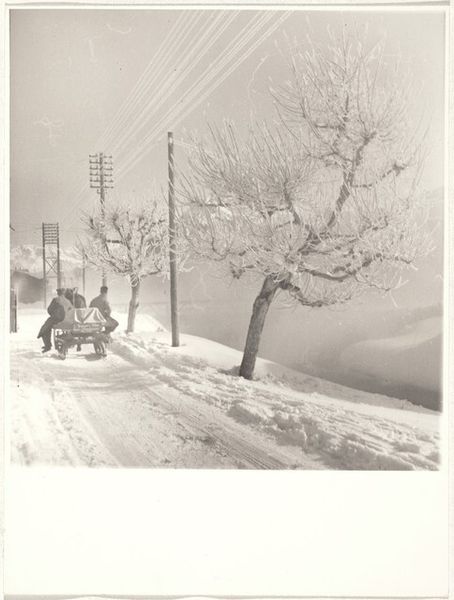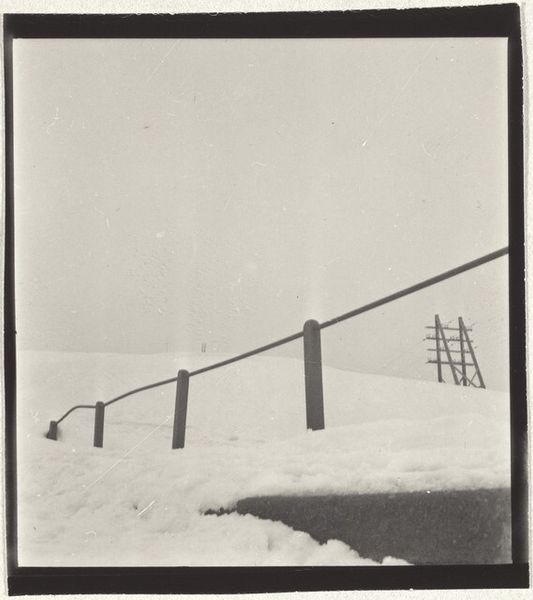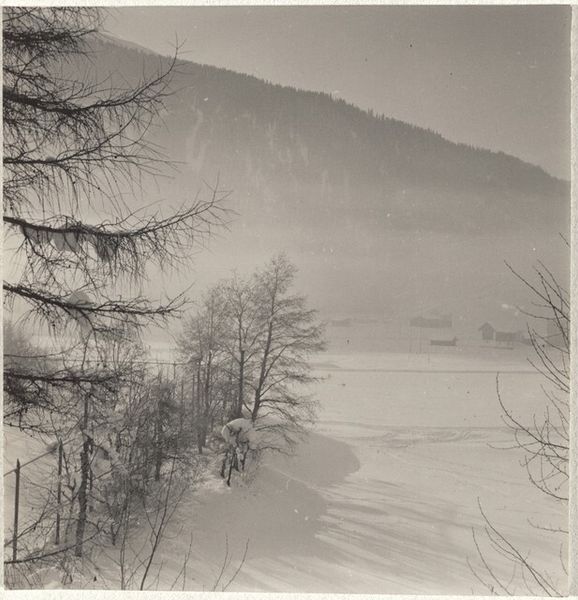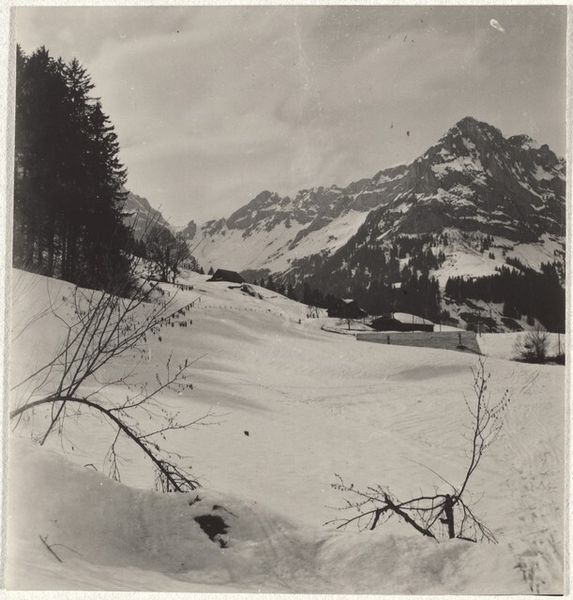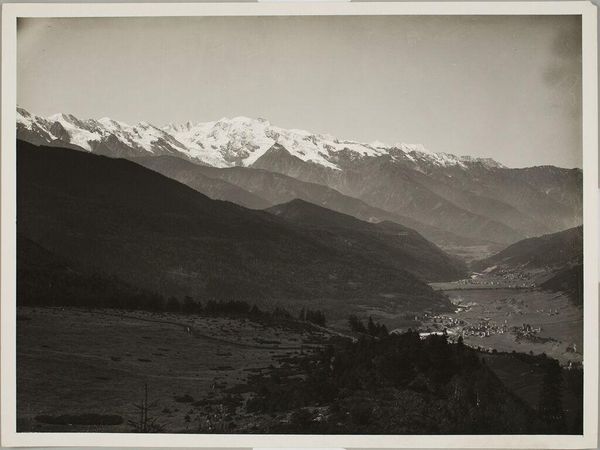
print, photography, gelatin-silver-print
# print
#
landscape
#
street-photography
#
photography
#
gelatin-silver-print
#
monochrome photography
#
realism
#
monochrome
Dimensions: sheet (trimmed to image): 5.7 x 5.5 cm (2 1/4 x 2 3/16 in.)
Copyright: National Gallery of Art: CC0 1.0
Editor: This gelatin-silver print, titled "Train Tracks - Transportation," was created by Robert Frank sometime between 1942 and 1946. I’m struck by how bleak yet beautiful the scene is. The train tracks receding into the distance create a real sense of isolation. What stands out to you? Curator: The photograph is indeed striking. Thinking historically, the post-war period saw a rise in existentialist thought. This image speaks to the alienation and uncertainty of the era, echoing the feeling that traditional paths, like those railways, might lead nowhere. The choice of a train as the image's theme reinforces the role of industry as one that shapes landscape and influences the everyday lives of citizens and national identity. Where do those lines of transport bring these citizens and products? Is there promise or simply expectation? Editor: That makes me consider the broader cultural implications, absolutely. The seemingly endless track against the backdrop of the distant mountains... Were there specific political factors influencing photography like this at the time? Curator: Absolutely. Post-war photography often grappled with questions of national identity and the individual’s place within it. Many photographers moved away from the heroic imagery used in wartime propaganda and leaned into realism, sometimes bordering on the melancholic, and sought ways to display an earnest and realistic portrayal of the times. The stark contrast of this print could also allude to social divisions and inequalities, the sense of being on a track predetermined by forces beyond one’s control. Editor: That's a completely different reading than I had initially. Now it feels much more charged, politically and socially. Curator: The public display of art – particularly photography – is always a political act. Frank’s work and its reception contributes to a dialogue about whose stories get told and how a nation sees itself. I wonder, reflecting on our discussion, does the piece still feel bleak to you? Editor: Yes, but it's a more informed bleakness. It’s now a reflection on societal anxieties, rather than just a surface impression of a desolate landscape. I really appreciate that historical context.
Comments
No comments
Be the first to comment and join the conversation on the ultimate creative platform.
